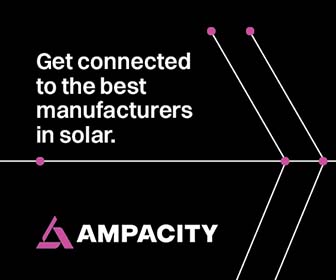Power Shift: How Solar PV is Driving a USD 578 Billion Clean Energy Revolution
The global energy landscape is undergoing a monumental transformation, and at the center of this evolution is solar photovoltaic (PV) technology. As the demand for clean, renewable, and sustainable energy sources intensifies, the solar PV market is poised to witness explosive growth in the coming decade. According to recent industry projections, the market size is expected to exceed USD 578.2 billion by 2034 — an astonishing figure that highlights both the urgency of climate action and the economic viability of solar energy.
The Surge in Solar PV Adoption
Solar PV systems, which convert sunlight directly into electricity using semiconducting materials, have gained massive traction over the past decade. Their scalability—from small rooftop installations to expansive solar farms—makes them an attractive solution for various applications. This widespread adaptability has been instrumental in propelling the market forward, supported by favorable government policies, technological innovations, and declining installation costs.
In many parts of the world, solar PV has already achieved grid parity, meaning it can generate electricity at a cost equal to or lower than conventional fossil fuel sources. As of 2024, countries like China, India, the United States, Germany, and Japan are leading the charge, accounting for a significant share of global installations. The anticipated growth to USD 578.2 billion by 2034 suggests an even wider global penetration, encompassing emerging markets in Latin America, Africa, and Southeast Asia.
Economic and Environmental Drivers
Several economic factors are fueling the rapid expansion of the solar PV market. Firstly, the continuous decline in the cost of PV modules and associated technologies has made solar power more accessible than ever. Innovations in manufacturing processes, materials like perovskite, and the rise of bifacial solar panels have significantly improved efficiency and reduced costs. According to the International Renewable Energy Agency (IRENA), solar PV module prices have dropped by more than 80% over the last decade, with further reductions expected.
On the environmental front, the urgency to combat climate change is a key driver. Nations worldwide are setting ambitious net-zero targets, with clean energy at the core of their strategies. Solar PV is a crucial pillar of these plans, as it offers a carbon-free method of power generation with minimal environmental footprint. Additionally, the decentralized nature of PV systems enhances energy security and reduces dependence on fossil fuels.
Policy Frameworks and Government Support
Government initiatives remain a cornerstone of the solar PV market’s growth. Across various countries, subsidies, tax incentives, feed-in tariffs, and renewable energy targets have played a pivotal role in encouraging both residential and commercial adoption. For instance, the U.S. federal Investment Tax Credit (ITC), which offers a 30% credit for solar systems on residential and commercial properties, has been instrumental in accelerating adoption.
In the European Union, the Green Deal and REPowerEU initiatives emphasize solar PV as a strategic energy source to reduce reliance on Russian gas and achieve carbon neutrality by 2050. Meanwhile, India’s Production Linked Incentive (PLI) scheme aims to boost domestic manufacturing of high-efficiency solar modules, creating a robust supply chain and generating employment.
China, the undisputed leader in solar PV production and installation, continues to dominate the supply chain, accounting for over 70% of global PV module production. Its ambitious solar capacity targets and support for innovation in battery storage and smart grid technologies are helping shape the future of global solar energy dynamics.
Technological Innovations and Market Segmentation
As the solar PV industry matures, technological advancements are reshaping its capabilities. High-efficiency solar cells, such as monocrystalline and heterojunction technology (HJT), are now more commonly used in utility-scale projects. Moreover, integration with energy storage systems and smart inverters is enabling more reliable and grid-responsive solar solutions.
Market segmentation reveals a diverse range of opportunities. The residential sector is seeing rapid growth, driven by rooftop solar and smart home integration. Commercial and industrial (C&I) installations are also expanding, with businesses increasingly investing in solar to cut operational costs and meet ESG (Environmental, Social, and Governance) goals.
The utility-scale segment remains the largest and fastest-growing. Massive solar farms, often paired with battery storage, are being deployed globally to supply clean energy to national grids. Floating solar farms, solar carports, and agro-photovoltaic systems (agriculture co-existing with solar panels) are emerging trends that further diversify the market.
Financing and Investment Trends
The journey to a USD 578.2 billion solar PV market by 2034 will be heavily influenced by investment and financing structures. Private equity, venture capital, green bonds, and public-private partnerships are increasingly funding solar projects. Institutional investors, driven by ESG mandates, are channeling capital into renewable portfolios, further validating the sector’s long-term potential.
Furthermore, innovative financing models like solar-as-a-service, community solar, and leasing arrangements are making PV systems affordable for lower-income households and small businesses. This democratization of solar access is expected to significantly broaden the market base in the coming years.
Challenges and Roadblocks
Despite the optimistic outlook, the solar PV market faces its share of challenges. Supply chain disruptions, especially in sourcing rare earth materials and polysilicon, can hamper production. Trade tensions and tariffs—such as those between the U.S. and China—may affect module prices and availability.
Land acquisition for utility-scale projects, intermittency issues without adequate storage, and the need for grid modernization also pose potential bottlenecks. Additionally, regulatory inconsistencies across regions and limited technical expertise in emerging markets can slow down deployment.
However, ongoing efforts to address these challenges, including international collaboration, digitalization of grid infrastructure, and R&D in next-gen solar technologies, suggest that the industry is well-equipped to navigate them.
GM Insights | www.gminsights.com








.png?r=4651)



